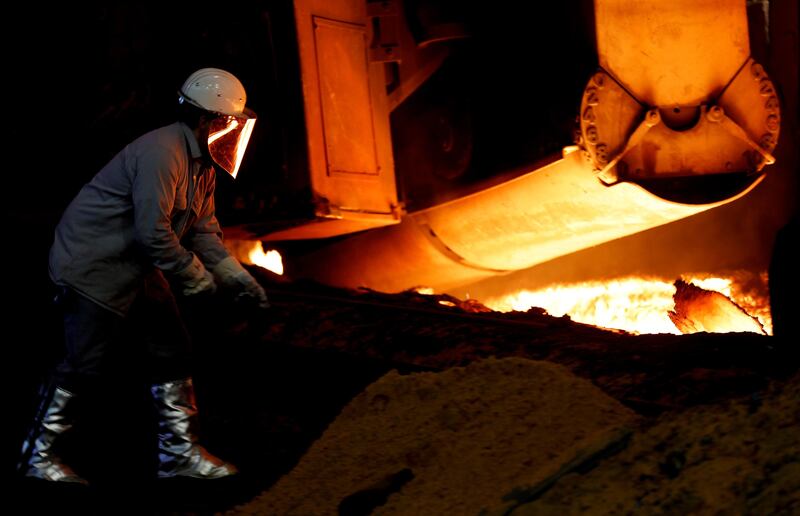Germany's Thyssenkrupp and India's Tata Steel struck a preliminary deal on Wednesday to merge their European steel operations in a 50-50 joint venture to create the continent's second-biggest steelmaker after ArcelorMittal.
The deal will not involve any cash, Tata Steel said, adding that both groups would contribute debt and liabilities to achieve an equal shareholding and remain long-term investors.
The companies say they need to consolidate to address overcapacity in the European steel market, which faces cheap imports from China and elsewhere, subdued demand for construction and inefficient legacy plants.
"No one is able to solve the structural issues in Europe alone. We all suffer from overcapacity and that means that everyone is making the same restructuring efforts," said the Thyssenkrupp chief executive Heinrich Hiesinger.
🚩Working to create new innovation-led Euro steel company #TataSteel & @thyssenkrupp_en sign MoU👉https://t.co/MAH2nmjD9C #TataSteelNews🇪🇺 pic.twitter.com/jeLFz1NGK4
— Tata Steel in Europe (@TataSteelEurope) September 20, 2017
Thyssenkrupp shares rose 4 per cent, boosted by hopes that the joint venture will ease the burden on its balance sheet, which will be freed from €4 billion (Dh17.64bn) in mostly pension liabilities.
Shares in Tata Steel were up 0.7 per cent.
Tata Steel last month reached a landmark deal that will allow it to reduce £15bn (Dh74.75bn) in pension liabilities, long seen as the main hurdle in talks between the companies, which have lasted more than a year and a half.
Tata Steel Europe has been a strain on the parent company Tata Steel for the past 10 years, causing it to burn cash at a rate of about US$1bn a year.
The new company, to be named Thyssenkrupp Tata Steel, will be headquartered in Amsterdam, the companies said on Wednesday after signing a memorandum of understanding (MoU). "Excellent news," tweeted the Dutch prime minister Mark Rutte.
The UK government and unions said they welcomed the merger so long as commitments made last year by Tata Steel UK to safeguard jobs and extend blast furnace operations at Britain's largest steelworks in Port Talbot, Wales, were maintained.
Roy Rickhuss, the chairman of the steel coordinating committee representing UK unions Unite, GMB and Community, said the unions recognise the industrial logic of the deal, but will still press Tata to confirm it will invest in the relining of Port Talbot’s blast furnace No 5.
Tata made the commitments to safeguard jobs and invest in Britain's Port Talbot steelworks last year in return for the unions agreeing to close their final salary pension scheme to future accrual.
_______________
Read more:
Tata Steel merger worries workers with a precedent
China seen as root cause of global steel industry crisis
Tata Group needs a new cash cow but has to trim the fat
_______________
The MoU, widely expected after Thyssenkrupp last week said a deal could be reached this month, outlines annual synergies of €400m to €600m as well as up to 4,000 job cuts, about 8 per cent of the joint workforce.
"This is a key positive catalyst supporting our thesis that Thyssenkrupp's core capital goods operations deserve a meaningful rerating," the Jefferies analyst Seth Rosenfeld wrote in a note.
Thyssenkrupp also has profitable businesses in elevators and high-tech car parts.
The MoU will be followed by negotiations about the details of the transactions as well as due diligence before a joint venture contract can be signed at the beginning of 2018, Thyssenkrupp said.
The joint venture is expected to have turnover of about €15bn a year and employ about 48,000 people, Tata Steel said.
The deal will require the approval of Thyssenkrupp's supervisory board and Tata Steel's board of directors as well as that of the European Commission.





